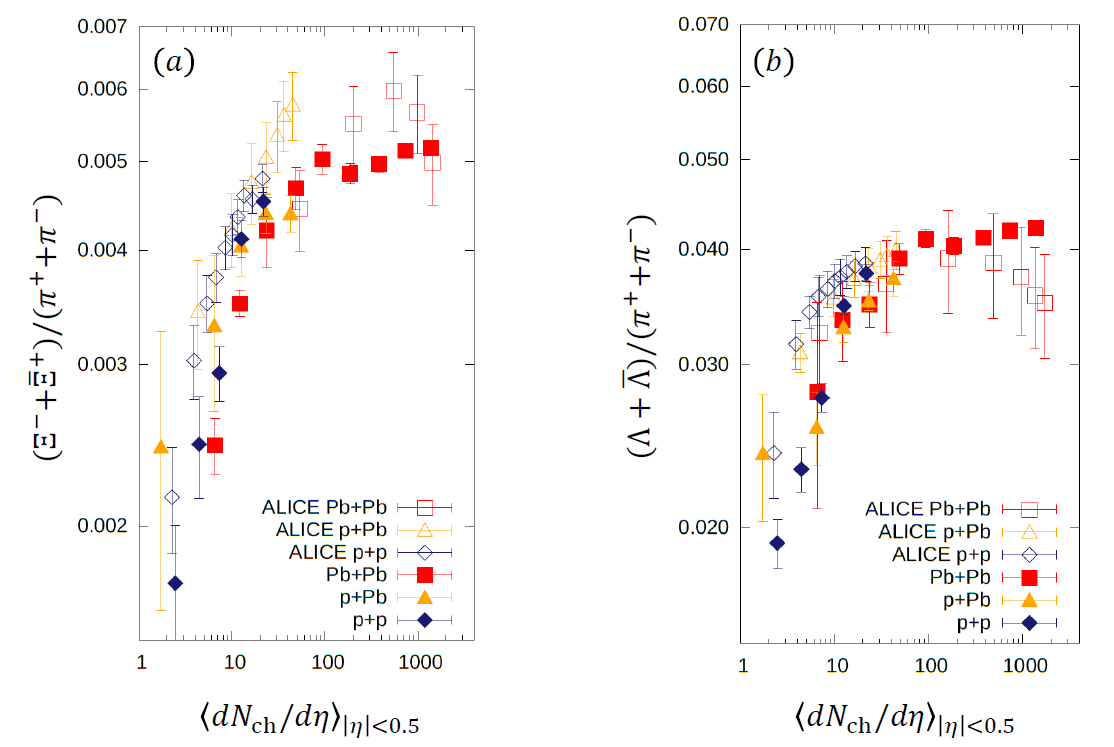Effects of saturation and fluctuating hotspots for flow observables in ultrarelativistic heavy-ion collisions
Authors:H. Hirvonen, M. Kuha, J. Auvinen, K. J. Eskola, Y. Kanakubo, H. Niemi
arXiv: Link to arXiv
We investigate the effects of saturation dynamics on midrapidity flow observables by adding fluctuating hotspots into the novel Monte Carlo EKRT (MC-EKRT) event generator for high-energy nuclear collisions. We demonstrate that the intensity of the saturation effects significantly affects the ratio between the flow coefficients v2 and v3 at the LHC. Adding a hotspot substructure to the nucleons enhances the saturation effects and improves the agreement with the measured data. We show that the collision-energy dependence of the flow coefficients obtained using the MC-EKRT initial states with hotspots is improved in comparison with the earlier event-by-event EKRT model. In addition, we present the results for the charged hadron multiplicity distribution in Pb+Pb collisions at the LHC, and show that the minijet-multiplicity originating fluctuations of the saturation scale included in MC-EKRT, as well as the presence of hotspots, are necessary for describing the measured large-multiplicity tail in the distribution.
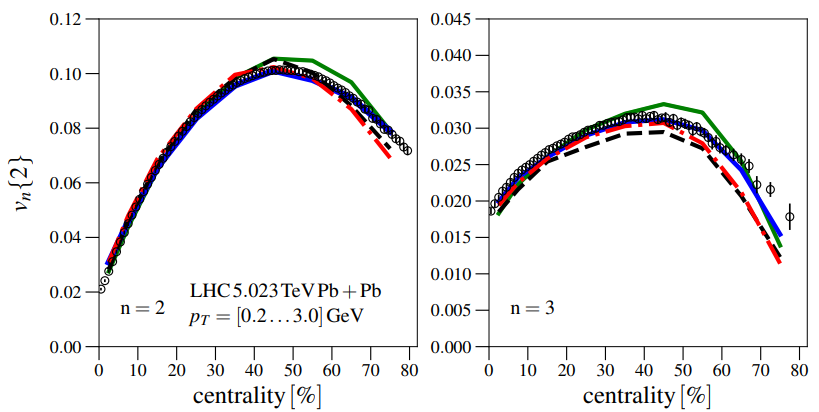
MC-EKRT: Monte Carlo event generator with saturated minijet production for initializing 3+1 D fluid dynamics in high energy nuclear collisions
Authors:M. Kuha, J. Auvinen, K. J. Eskola, H. Hirvonen, Y. Kanakubo, H. Niemi
arXiv: Link to arXiv
We present a novel Monte-Carlo implementation of the EKRT model, MC-EKRT, for computing partonic initial states in high-energy nuclear collisions. Our new MC-EKRT event generator is based on collinearly factorized, dynamically fluctuating pQCD minijet production, supplemented with a saturation conjecture that controls the low pT particle production. Previously, the EKRT model has been very successful in describing low pT observables at mid-rapidity in heavy-ion collisions at the LHC and RHIC energies. As novel features, our new MC implementation gives a full 3-dimensional initial state event-by-event, includes dynamical minijet-multiplicity fluctuations in the saturation and particle production, introduces a new type of spatially dependent nuclear parton distribution functions, and accounts for the conservation of energy/momentum and valence-quark number. In this proof-of-principle study, we average a large set of event-by-event MC-EKRT initial conditions and compute the rapidity and centrality dependence of the charged hadron multiplicities and elliptic flow for the LHC Pb+Pb and RHIC Au+Au collisions using 3+1 D viscous fluid-dynamical evolution. Also event-by-event fluctuations and decorrelations of initial eccentricities are studied. The good agreement with the rapidity-dependent data suggests that the same saturation mechanism that has been very successful in explaining the mid-rapidity observables, works well also at larger rapidities.
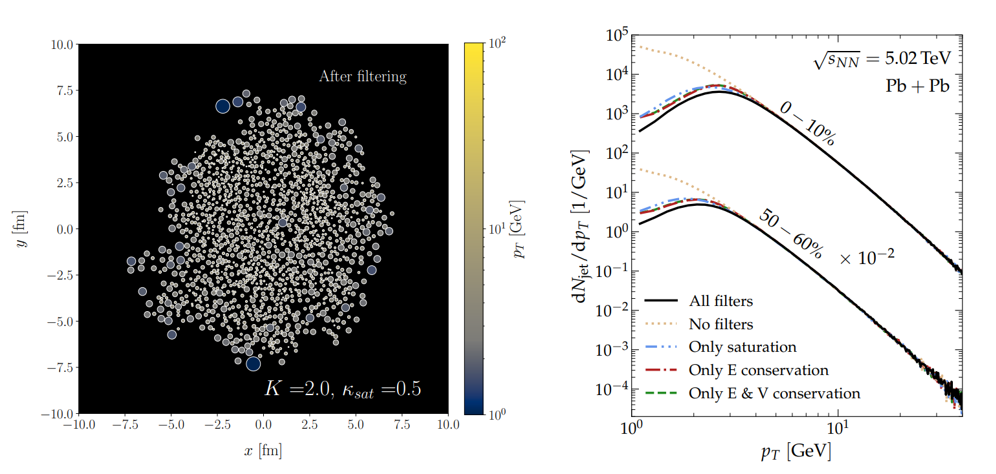
Nonequilibrium components in the region of very low transverse momentum in high-energy nuclear collisions
Authors: Y. Kanakubo, Y. Tachibana, T. Hirano
DOI: Phys.Rev.C 106 (2022) 5, 054908
arXiv: Link to arXiv
We analyze Pb+Pb collisions at 2.76 TeV with a novel framework based on the dynamical core-corona picture that describes particle productions from both equilibrium and nonequilibrium components. We remark on the possibility of the contribution from nonequilibrium components in the very low transverse momentum region and show that such contributions significantly affect pT-integrated four-particle cumulants. These results strongly suggest the necessity of nonequilibrium components when one extracts properties of the quark-gluon plasma from experimental data using sophisticated dynamical models based on relativistic hydrodynamics.
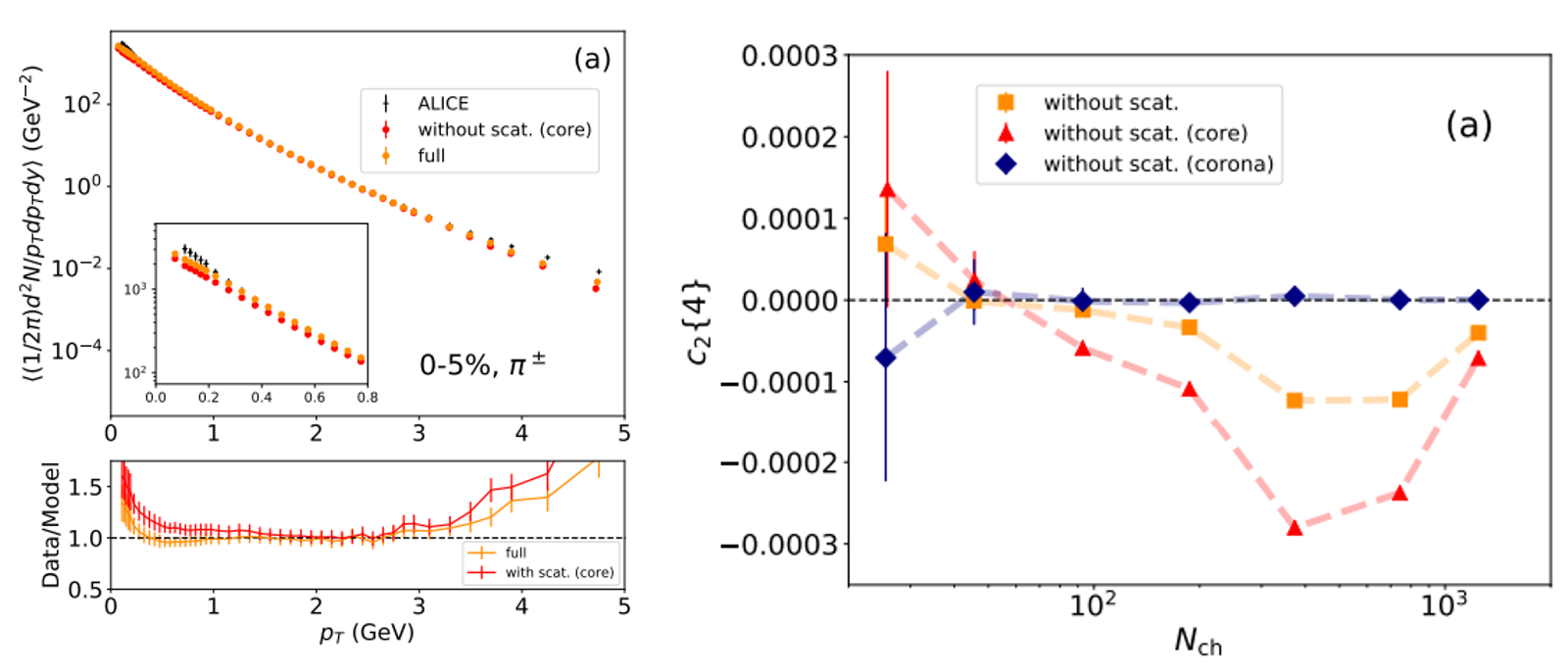
Interplay between core and corona components in high-energy nuclear collisions
Authors: Y. Kanakubo, Y. Tachibana, T. Hirano
DOI: Phys.Rev.C 105 (2022) 2, 024905
arXiv: Link to arXiv
We establish the updated version of dynamical core-corona initialization framework (DCCI2) as a unified description from small to large colliding systems and from low- to high-transverse-momentum pT regions. Using DCCI2, we investigate effects of interplay between locally equilibrated and nonequilibrated systems, in other words, core and corona components in high-energy nuclear collisions. Given experimental multiplicity distributions and yield ratios of Omega baryons to charged pions as inputs, we extract the fraction of core and corona components in p+p collisions at centre-of-mass energy of nucleon nucleon collisions 7 TeV and Pb+Pb collisions at 2.76 TeV. We find core contribution overtakes corona contribution as increasing multiplicity above dNdeta~20 regardless of the collision system or energy. We also see that the core contribution exceeds the corona contribution only in 0.0–0.95% multiplicity class in p+p collisions. Notably, there is a small enhancement of corona contribution with ~20% below pT~1 GeV even in minimum bias Pb+Pb collisions. We find that the corona contribution at low pT gives ~15-30% correction on v2{2} at Nch less than ~400. This raises a problem in conventional hydrodynamic analyses in which low pT soft hadrons originate solely from core components. We finally scrutinize the roles of string fragmentation and the longitudinal expansion in the transverse energy per unit rapidity, which is crucial in initial conditions for hydrodynamics from event generators based on string models.
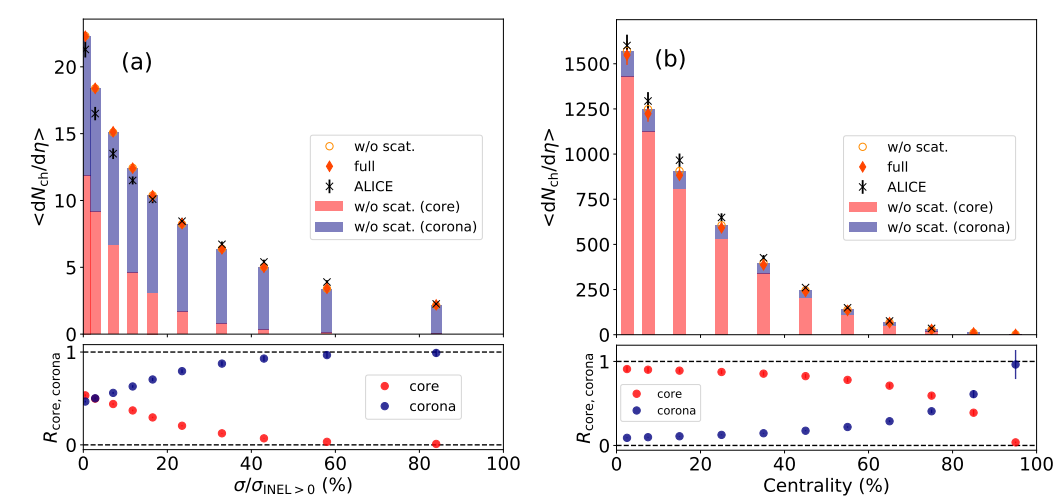
Unified description of hadron yield ratios from dynamical core-corona initialization
Authors: Y. Kanakubo, Y. Tachibana, T. Hirano
DOI: Phys.Rev.C 101 (2020) 2, 024912
arXiv: Link to arXiv
We develop the dynamical core-corona initialization framework as a phenomenological description of the formation of quark gluon plasma (QGP) fluids in high-energy nuclear collisions. Using this framework, we investigate the fraction of the fluidized energy to the total energy and strange hadron yield ratios as functions of multiplicity, and we scrutinize the multiplicity scaling of hadron yield ratios recently reported by the ALICE Collaboration. Our results strongly indicate that the QGP fluids are partly formed even at the averaged multiplicity for nonsingle diffractive p+p events.
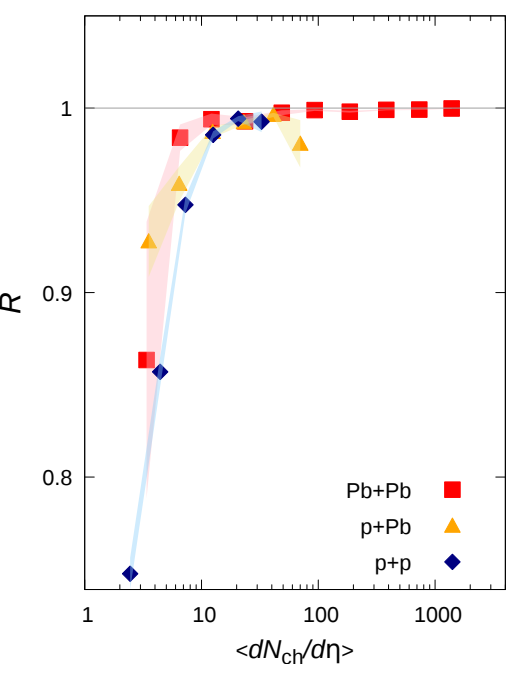
Enhancement of strange baryons in high-multiplicity proton–proton and proton–nucleus collisions
Authors: Y. Kanakubo, M. Okai, Y. Tachibana, T. Hirano
DOI: PTEP 2018 (2018) 12, 121D01
arXiv: Link to arXiv
We investigate the enhancement of yields of strange and multi-strange baryons in proton–proton (p+p), proton–lead (p+Pb), and lead–lead (Pb+Pb) collisions at Large Hadron Collider (LHC) energies from a dynamical core–corona initialization model. We first generate partons just after the collisions by using event generators. These partons dynamically generate the quark gluon plasma (QGP) fluids through the source terms in the hydrodynamic equations. According to the core–corona picture, this process tends to happen where the density of generated partons is high and their transverse momentum is low. Some partons do not fully participate in this process when they are in dilute regions or their transverse momentum is high, and subsequently fragment into hadrons through string fragmentation. In this framework, the final hadrons come from either chemically equilibrated fluids as in the conventional hydrodynamic models or string fragmentation. We calculate the ratio of strange baryons to charged pions as a function of multiplicity and find that it monotonically increases up to dNdeta~100 then saturates above. This suggests that the QGP fluids are partly created and that their fraction increases with multiplicity in p+p and p+Pb collisions at LHC energies.
